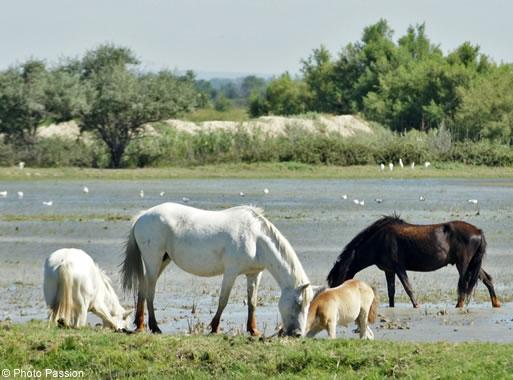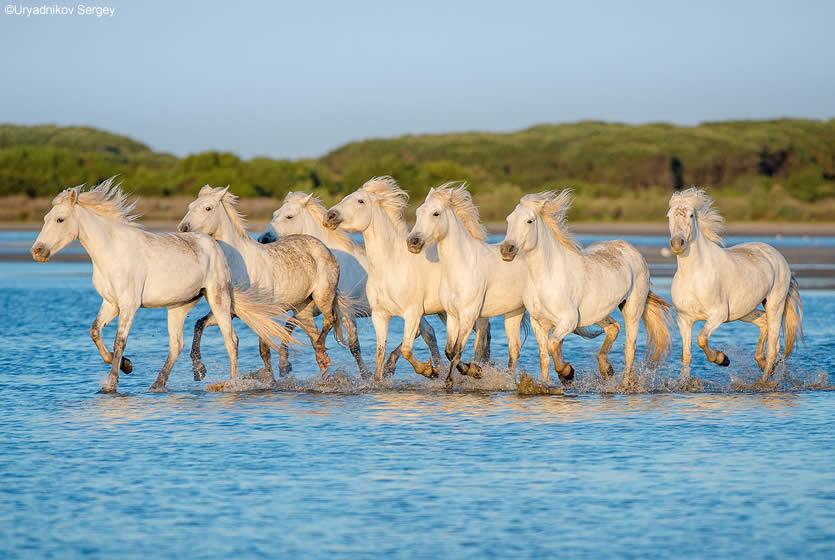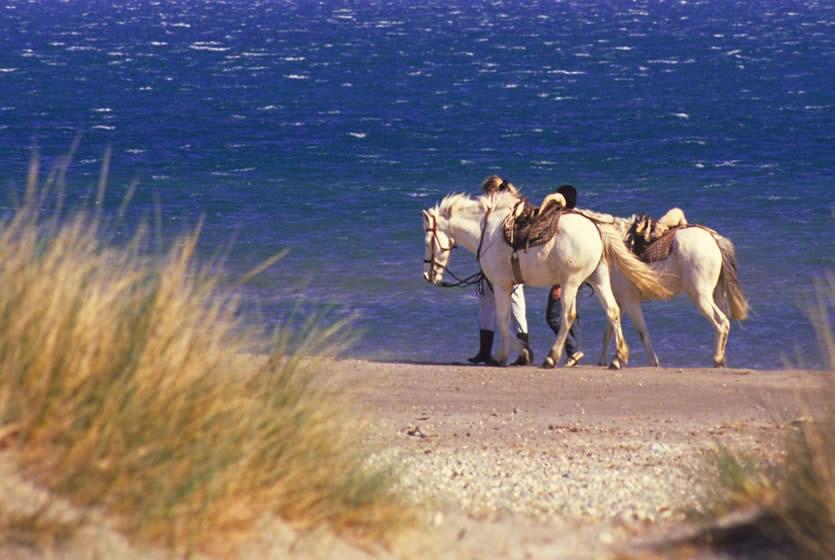

The most noble of Man's conquests is that of this proud and spirited animal, his companion in the fatigues of war and the glory of battle.
Extract from Buffon's book; "Natural History"
In these admirable lines, French naturalist Georges-Louis Leclerc, Comte de Buffon, reminds us of the love and respect that Man has always felt for this companion in war, work and passion over the centuries.
In the Camargue, rooted in agricultural and pastoral traditions, men are lovingly devoted to their horses, more so now than ever, as they are vital for their survival. It is the breeding of bulls that has kept this loving bond alive to this day, since the horse is an essential part of the process.
Not far from the village of Le Cailar, known as the capital of the Bouvine (symbolising bull-related activities and the immense respect held for this animal), opposite the vast étangs (small salt water lakes) of La Petite Camargue ("Little Camargue"), local memory tells of a horseman who, wishing to pay the most honourable homage to his companion, buried his horse upright, saddled, and bridled, with a trident at his side, forever commemorating his proud race. All across this tremendous region, which stretches from Languedoc to Provence, there is an un-wavering care and respect devoted to this, the Camargue horse.
The story goes that, according to bones (identical to those of the Camargue horse) found on the shores of the Quaternary Sea, in the marshy regions of the Saone and the Loire, the Camargue horse is the worthy descendant of the Solutré horse (horses from the Paleolithic period - 17,000 years ago), whose mental and physical being was shaped by his harsh surroundings. This is still the case today; the wild, quasi-desert, and marshy stretches of Camargue land have given the Camargue horse the same features as his ancestor.
Under the stars that make up his shelter, and faced with an environment that seasonally switches between sweltering heat and icy temperatures, this horse has a natural hardiness and stamina for which the manadiers (the head or owner of a farm that breeds bulls) and gardians (bull herdsmen specific to the Camargue region) are eternally grateful when carry-ing out the essential activity of bull breeding; a tradition they are only able to uphold thanks to these horses.
Here like elsewhere, mechanised agriculture has threatened the existence of certain breeds of horse, doing a disgraceful injustice to these horses that are so badly rewarded for their undying loyalty which can sometimes be forgotten. However, here in the Camar-gue a happy alternative has been found, and the Camargue horse has become an indis-pensible part in the bull breeding tradition.
Hardy, spirited and quick in action, but also humble from the tough tasks that have been his life's work, the Camargue horse is more alluring than ever. His short neck, strong legs, thick mane, and white coat, also called grey, make him the ideal companion for the Camarguais (people from the Camargue) as lovers of big open spaces. For tackling this wild environment and losing yourself in the silence of the enormous marshlands, where only the noise of a bird's wings or a bull's bellow can be heard, the Camargue horse will be your best guide, and, very soon, your best friend too.
In allowing yourself to be carried away by this enchanting creature across this magnifi-cent piece of earth between sky and sea, you will witness endless magical moments while sharing in this strange and beautiful complicity between Man and beast.
Text: Annie Montagard

White horses of Camargue running on the sand

Horseback riding on the beach